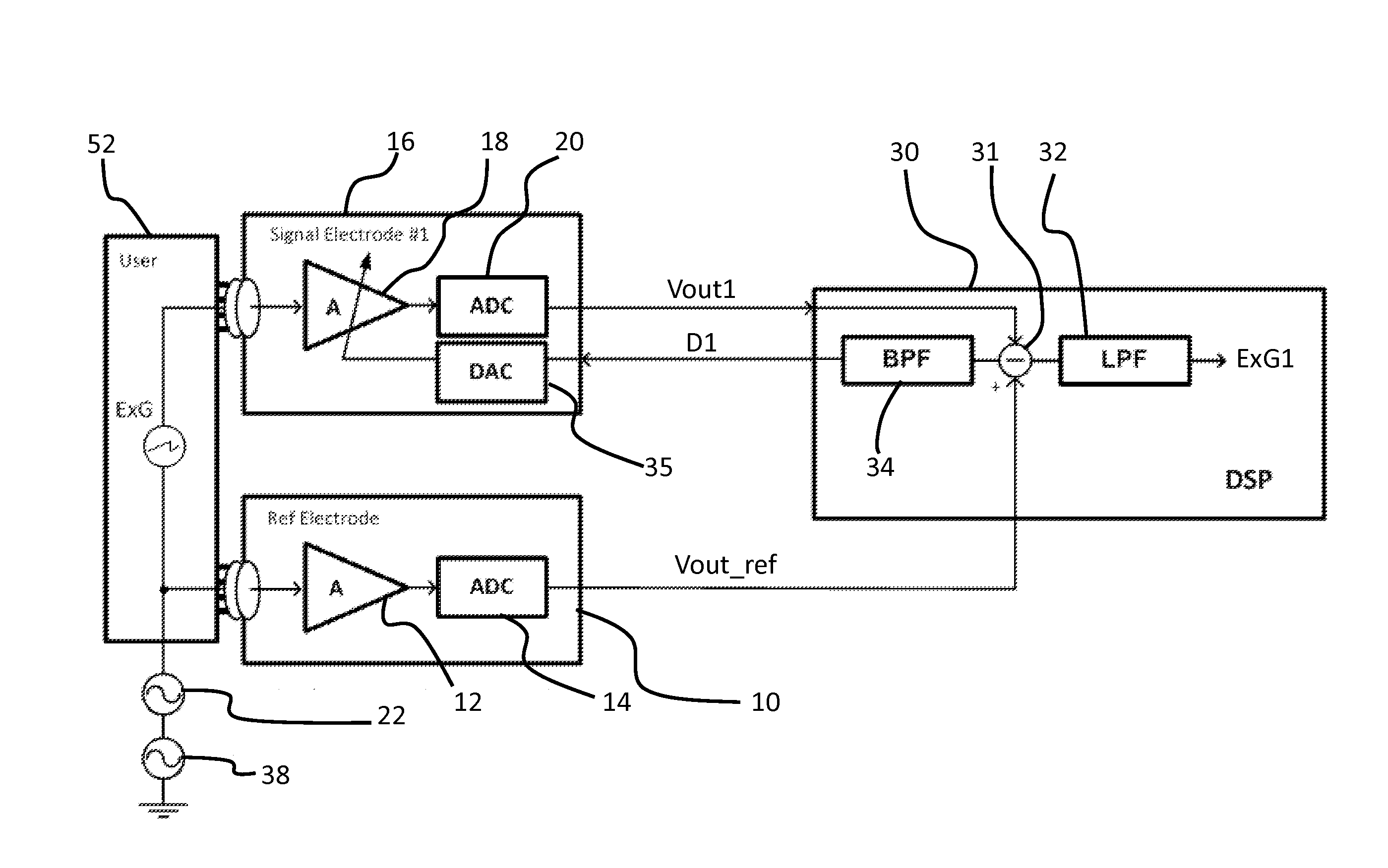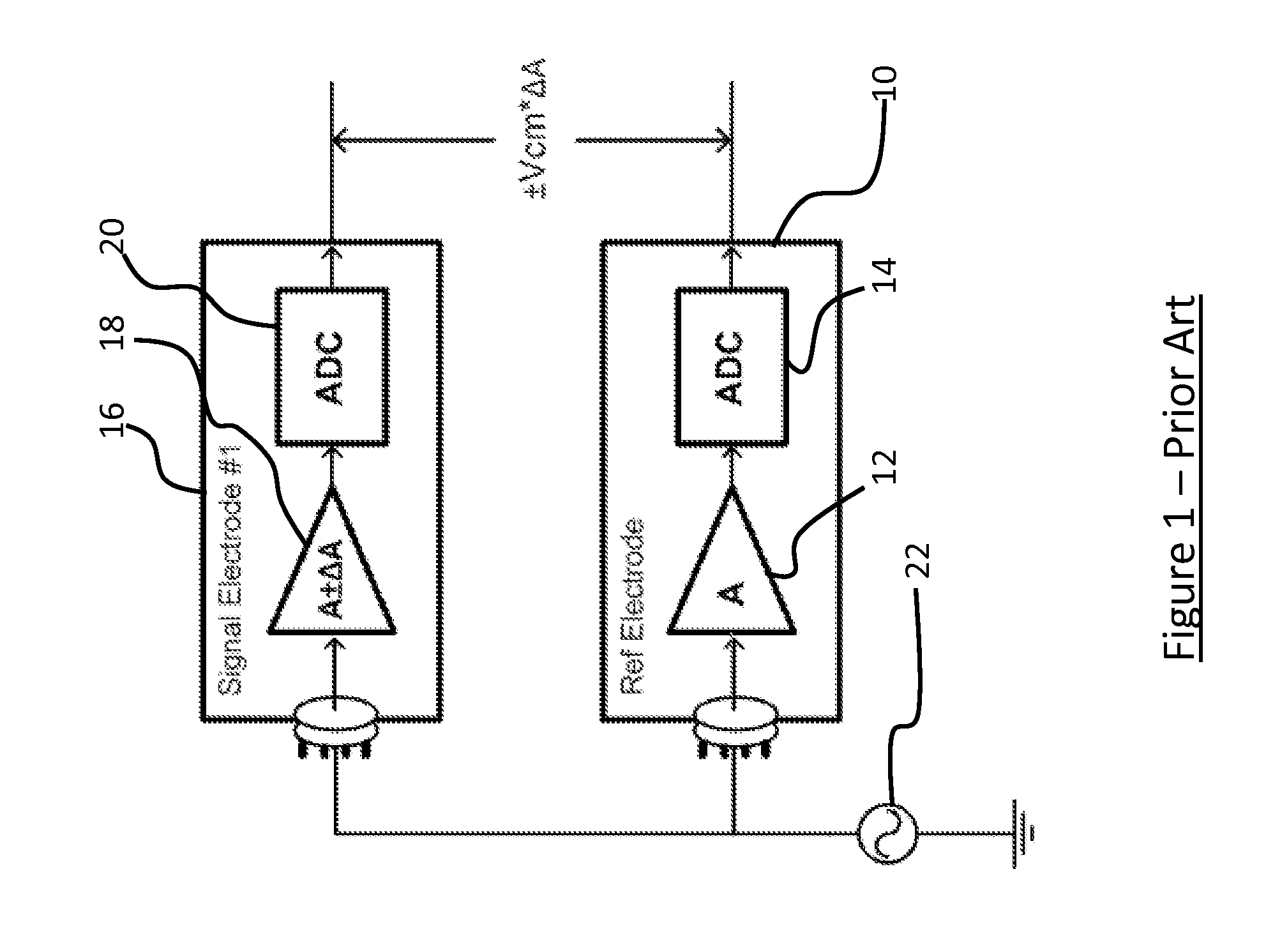Biopotential Signal Acquisition System and Method
a biopotential signal and acquisition system technology, applied in the field of acquisition of biopotential signals, can solve problems such as common mode interference, particular problems of common mode signals, and gain mismatch between active electrodes, and achieve the effect of large bandwidth amplifiers
- Summary
- Abstract
- Description
- Claims
- Application Information
AI Technical Summary
Benefits of technology
Problems solved by technology
Method used
Image
Examples
Embodiment Construction
[0036]According to an embodiment, the disclosure provides an active electrode biopotential acquisition system in which the active electrodes provide digitized outputs. In the digital domain, a gain control signal is derived based on the response to a common mode test signal at a test frequency. This is fed back to one of the active electrodes and is used to adjust a gain of the active electrode. This provides a CMRR calibration system and method that can continuously adjust the voltage gain of an active electrode to compensate for the voltage gain difference between active electrodes and to improve CMRR during the biopotential signal acquisition.
[0037]FIG. 2 shows a first example of signal acquisition system of the disclosure.
[0038]The same reference numbers are used as in FIG. 1 for the same or similar components. The ADC 20 of the signal active electrode 16 generates an output Vout1 and the ADC 14 of the reference active electrode 10 generates an output Vout_ref.
[0039]The referenc...
PUM
 Login to View More
Login to View More Abstract
Description
Claims
Application Information
 Login to View More
Login to View More - R&D
- Intellectual Property
- Life Sciences
- Materials
- Tech Scout
- Unparalleled Data Quality
- Higher Quality Content
- 60% Fewer Hallucinations
Browse by: Latest US Patents, China's latest patents, Technical Efficacy Thesaurus, Application Domain, Technology Topic, Popular Technical Reports.
© 2025 PatSnap. All rights reserved.Legal|Privacy policy|Modern Slavery Act Transparency Statement|Sitemap|About US| Contact US: help@patsnap.com



